Empowering Senior Citizens with Essential Self-Defense Techniques
As we age, the world can sometimes feel like a more daunting place. For many senior citizens, the thought of walking alone or navigating through crowded spaces can evoke feelings of vulnerability and anxiety. However, the good news is that self-defense isn't just for the young and spry; it's for everyone, including our beloved seniors. This article explores vital self-defense techniques tailored specifically for older adults, aiming to enhance their confidence, safety, and independence in various situations they may encounter in daily life.
Imagine being able to walk down the street with your head held high, knowing you have the skills to protect yourself if necessary. Self-defense is not merely about physical confrontation; it’s about empowerment. It’s about understanding your surroundings, recognizing potential threats, and having the confidence to handle unexpected situations. By learning essential self-defense techniques, seniors can reclaim their sense of security and independence, allowing them to enjoy life without fear.
Moreover, these techniques don't require extensive physical strength or agility. Instead, they focus on awareness, communication, and simple physical maneuvers that anyone can learn. It's about using your mind as much as your body. Remember, the goal is not to become a martial arts expert but to equip yourself with the tools necessary to navigate the world confidently and safely.
In this article, we will delve into the importance of self-defense for seniors, the common threats they may face, and practical techniques that can be easily learned and applied. We'll also discuss how building confidence through training and creating a personal safety plan can further enhance their sense of security. So, let’s embark on this journey of empowerment together, ensuring that our senior citizens are not just surviving but thriving in their golden years.
- What are the basic self-defense techniques seniors can learn? Basic techniques include verbal de-escalation, simple physical moves like wrist grabs, and awareness strategies.
- Is self-defense training safe for seniors? Yes, training can be tailored to individual abilities and focuses on non-violent techniques to avoid confrontation.
- How can seniors practice self-defense? Seniors can practice with friends or family, attend classes, or use instructional videos to reinforce their skills.
- What should seniors do if they feel threatened? They should trust their instincts, seek help if needed, and use their learned skills to de-escalate or escape the situation.
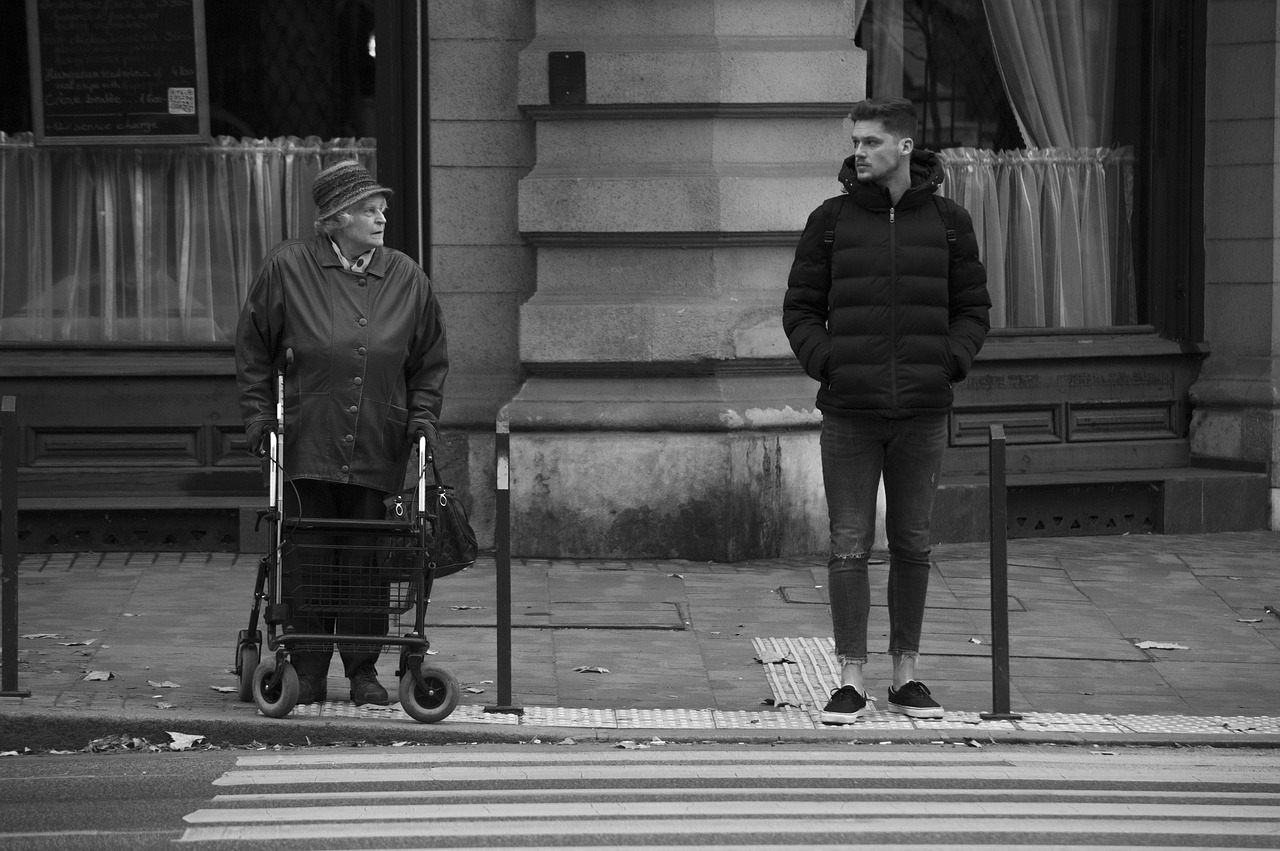
Understanding the Importance of Self-Defense
Self-defense is not just about physical altercations; it’s about empowerment, confidence, and the ability to navigate the world with a sense of security. For senior citizens, the significance of self-defense training extends beyond the mere acquisition of techniques. It’s about fostering a mindset that prioritizes safety and awareness in everyday situations. Imagine walking through a park, feeling the sun on your face, and knowing that you have the skills to protect yourself if needed. This sense of security can enhance your quality of life, allowing you to engage more freely with your community.
Moreover, self-defense training can positively impact mental health. When seniors learn how to defend themselves, they often experience a boost in self-esteem and a reduction in anxiety related to potential threats. This newfound confidence can lead to increased social interactions and a more active lifestyle. Just think about it: how often do you hesitate to go out because of fear? With the right training, that fear can transform into empowerment.
Additionally, self-defense is a proactive approach to safety. It equips seniors with the tools to recognize and avoid dangerous situations before they escalate. Awareness of one’s surroundings is a crucial aspect of self-defense, and through training, seniors can develop a keen sense of observation. For instance, understanding how to spot suspicious behavior or recognizing when something feels off can be the difference between a safe outing and a potentially harmful encounter.
Incorporating self-defense into one’s routine can also serve as a social activity. Many classes are designed to be inclusive and supportive, creating a community of learners who share similar concerns and aspirations. This sense of camaraderie not only makes learning more enjoyable but also reinforces the idea that safety is a collective responsibility. When seniors train together, they build friendships and support networks that extend beyond the classroom.
In summary, understanding the importance of self-defense for seniors is about more than just techniques; it's about fostering a holistic approach to safety, confidence, and community engagement. As we delve deeper into the challenges seniors face, it becomes clear that equipping them with self-defense knowledge is essential for enhancing their independence and overall well-being.
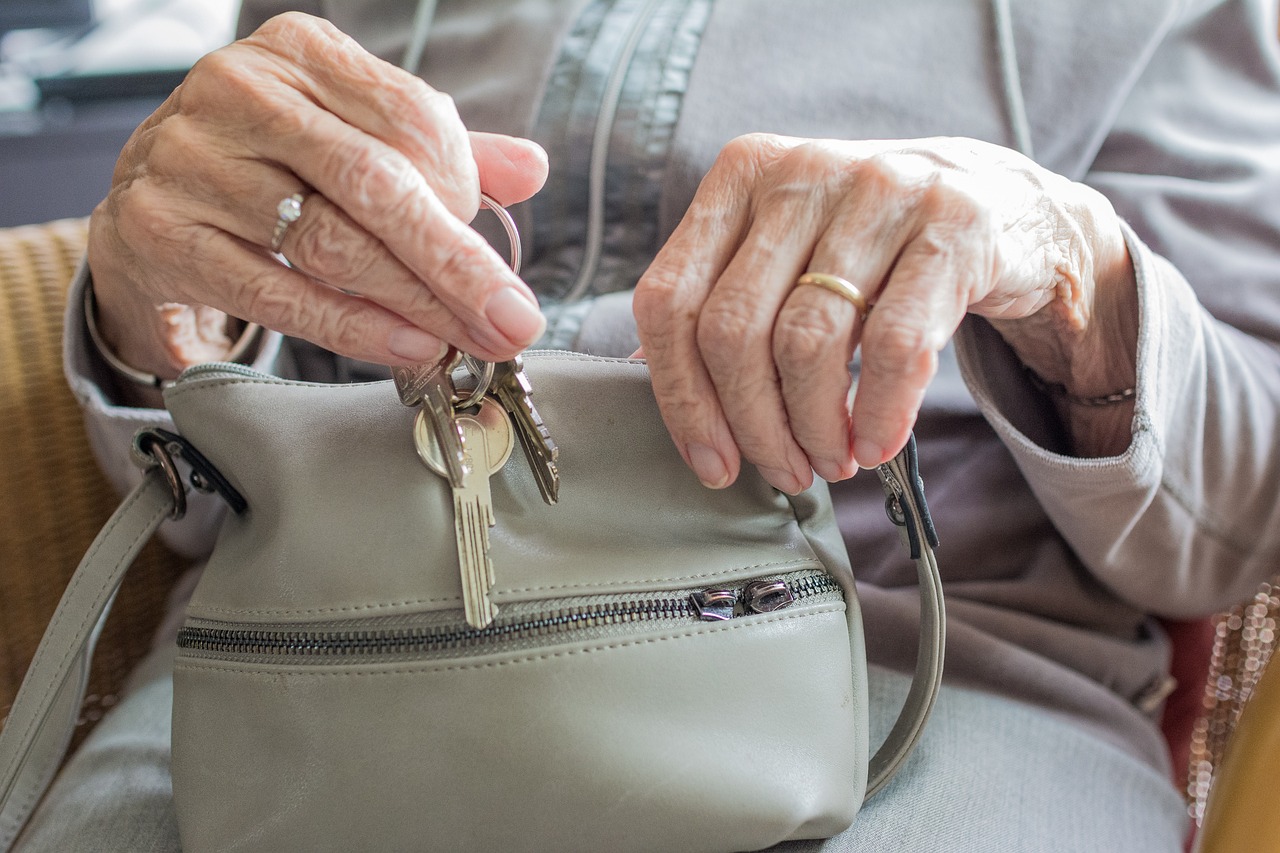
Common Threats Faced by Seniors
As we age, the world can sometimes feel like a more dangerous place. For seniors, everyday activities can pose unique challenges and threats that may not be as prevalent for younger individuals. Understanding these threats is the first step toward empowerment and safety. Seniors often find themselves vulnerable to various dangers, which can range from physical attacks to financial scams. This vulnerability can stem from a combination of factors, including physical limitations, social isolation, and a lack of awareness about potential dangers.
One of the most alarming issues is the risk of physical attacks. Statistics reveal that older adults are often targeted by criminals who perceive them as easy prey. According to the National Council on Aging, seniors are more likely to experience violent crimes, such as robbery or assault, particularly in urban areas. These attacks can happen in various settings, including their own neighborhoods, shopping centers, or even in their homes. The fear of such incidents can be debilitating and often leads to a decreased quality of life as seniors may limit their activities to stay safe.
In addition to physical threats, seniors are frequently targeted by scams and fraud. The digital age has opened the door to a myriad of fraudulent schemes, and unfortunately, many seniors are unaware of these tactics. Common scams include phishing emails that trick individuals into providing personal information, fake lottery winnings, and deceptive telemarketing calls. According to the Federal Trade Commission, older adults lose billions of dollars each year to fraud, which can significantly impact their financial security and overall well-being.
Furthermore, environmental hazards also pose a significant risk. Seniors may face challenges such as slippery floors, uneven sidewalks, or poorly lit areas that can lead to falls and injuries. These accidents can be particularly devastating for older adults, often resulting in long recovery times and a loss of independence. It's crucial for seniors to be aware of their surroundings and take proactive steps to mitigate these risks.
To summarize, the common threats faced by seniors can be categorized into three main areas:
- Physical Attacks: Vulnerability to violent crimes, particularly in public spaces.
- Scams and Fraud: Targeted by various fraudulent schemes that exploit their trust.
- Environmental Hazards: Risks associated with falls and injuries due to unsafe surroundings.
By recognizing these threats, seniors can take proactive measures to enhance their awareness and safety. It’s essential to stay informed and educated about these risks to navigate the world confidently.
Q: What are the most common scams targeting seniors?
A: Common scams include lottery scams, fake charity solicitations, and phishing emails that seek personal information.
Q: How can seniors protect themselves from physical attacks?
A: Seniors can enhance their safety by being aware of their surroundings, avoiding isolated areas, and learning self-defense techniques.
Q: What should seniors do if they suspect they are being scammed?
A: They should report the scam to local authorities and organizations like the Federal Trade Commission to help prevent others from falling victim.

Physical Attacks
Physical assaults can be particularly alarming for seniors, and understanding the landscape of these threats is essential for their safety. As communities evolve, so do the risks that older adults face. Statistics reveal a troubling reality: according to the National Council on Aging, nearly 1 in 10 seniors experience some form of elder abuse, which can manifest as physical attacks. The fear of violence can be overwhelming, but knowledge is a powerful tool in combating this fear.
When we think about physical attacks, it’s important to recognize that they can take many forms. These may include muggings, push-and-shove incidents, or even more severe forms of violence. Seniors are often perceived as vulnerable due to their age, which can make them attractive targets for would-be assailants. The perception of vulnerability is compounded by factors such as mobility issues or the use of assistive devices, which can unfortunately signal weakness to potential attackers.
To illustrate the types of physical threats seniors might encounter, consider the following scenarios:
- Muggings: A senior walking alone may be targeted for their purse or wallet, especially in poorly lit areas.
- Assaults: These can happen in various settings, including public transportation or even within their own homes.
- Domestic Violence: Sadly, many seniors face violence from caregivers or family members, a situation that can be particularly complex and difficult to escape.
Understanding the statistics behind these attacks can help seniors and their families take proactive measures. For instance, a recent study showed that seniors living in urban areas are at a higher risk of experiencing physical violence compared to those in rural settings. This knowledge can empower seniors to be more vigilant about their surroundings and to consider their safety when choosing where to live or travel.
Moreover, awareness of one’s vulnerability is crucial. Factors contributing to this vulnerability include physical limitations, lack of self-defense knowledge, and social isolation. By recognizing these vulnerabilities, seniors can take steps to mitigate risks. Simple actions, such as avoiding isolated areas, staying in well-lit environments, and being mindful of their surroundings, can significantly enhance their safety. Awareness is the first line of defense against potential threats.
In conclusion, while the threat of physical attacks can be daunting, it’s crucial for seniors to remain informed and proactive. By understanding the types of threats they may face and the factors contributing to their vulnerability, older adults can better prepare themselves. This preparation not only enhances their safety but also fosters a sense of empowerment and confidence in their ability to navigate the world around them.
Q: What should I do if I feel threatened while walking alone?
A: Trust your instincts. If you feel uncomfortable, seek help from nearby individuals or move to a more populated area. Carrying a personal alarm can also be helpful.
Q: How can I improve my situational awareness?
A: Practice being aware of your surroundings by observing people and activities around you. Avoid distractions like looking at your phone while walking.
Q: Are there specific self-defense classes for seniors?
A: Yes, many community centers and martial arts studios offer self-defense classes tailored for seniors, focusing on techniques that are easy to learn and implement.
Q: What steps can I take to prevent being a target?
A: Stay alert, avoid displaying valuables, and try to walk with a friend or in groups whenever possible. Trust your gut feelings about your surroundings.
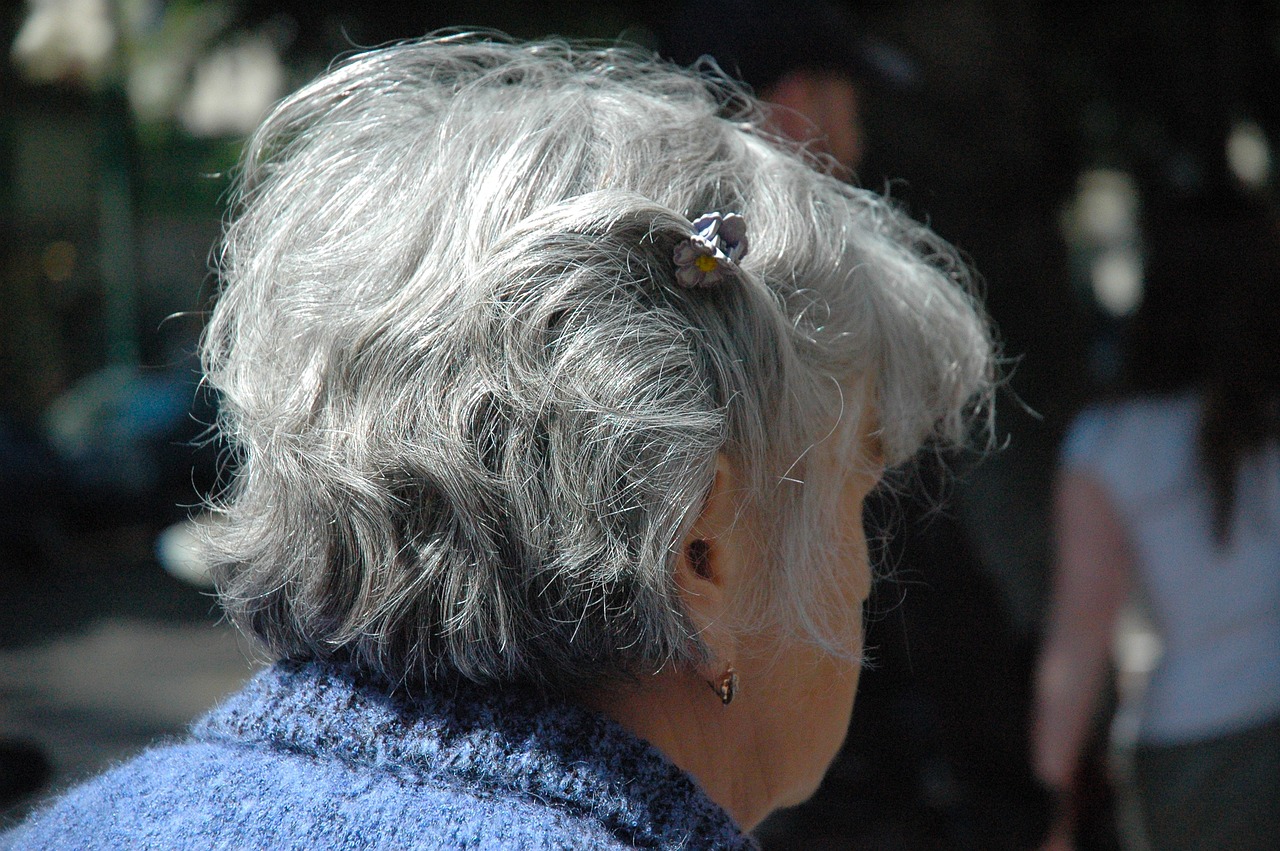
Understanding Vulnerability
As we age, it’s not uncommon to feel a bit more vulnerable than we did in our younger years. This perception of vulnerability can stem from various factors, including physical limitations, slower reflexes, and even societal attitudes towards aging. Understanding these vulnerabilities is crucial for seniors as it empowers them to take proactive steps to enhance their personal safety.
One major aspect of vulnerability is the physical changes that occur with age. Seniors may experience decreased strength, balance issues, or chronic health conditions that can hinder their ability to respond quickly in threatening situations. These factors can make them appear as easy targets for potential attackers, leading to a heightened sense of fear and anxiety. However, recognizing these vulnerabilities does not mean succumbing to fear; rather, it’s about developing strategies to cope with and counteract these challenges.
Furthermore, societal perceptions play a significant role in how seniors are treated. Many individuals may unconsciously view older adults as frail or incapable, which can lead to disrespectful behavior or exploitation. This underscores the importance of awareness; when seniors understand how they may be perceived, they can better prepare themselves to assert their presence and confidence in various situations.
Another factor contributing to vulnerability is the lack of awareness regarding personal safety. Many seniors may not be fully cognizant of their surroundings or may not recognize potentially dangerous situations until it’s too late. For instance, being engrossed in a conversation or distracted by a mobile device can make a senior less aware of their environment, leaving them open to various threats. Developing situational awareness can significantly reduce these risks.
To further illustrate the various factors influencing vulnerability, consider the following table highlighting key vulnerabilities and corresponding strategies for mitigation:
| Vulnerability Factor | Mitigation Strategy |
|---|---|
| Physical Limitations | Engage in regular exercise to maintain strength and balance. |
| Societal Perceptions | Practice assertiveness and self-advocacy skills. |
| Lack of Awareness | Participate in situational awareness training and practice mindfulness. |
In conclusion, understanding vulnerability is the first step towards empowerment. By recognizing the factors that contribute to their vulnerability, seniors can take charge of their safety and well-being. This knowledge not only helps in developing effective self-defense strategies but also fosters a sense of independence and confidence that is essential for a fulfilling life.
- What are some common vulnerabilities faced by seniors? Seniors may face vulnerabilities related to physical limitations, societal perceptions, and a lack of situational awareness.
- How can seniors improve their self-defense skills? Engaging in regular self-defense classes, practicing with friends and family, and maintaining physical fitness can enhance self-defense skills.
- Why is situational awareness important for seniors? Situational awareness helps seniors identify potential dangers in their environment, allowing them to respond quickly and effectively to threats.

Recognizing Warning Signs
Being aware of your surroundings is a critical component of self-defense, especially for seniors. can mean the difference between a safe outing and a potentially dangerous situation. Just like a hawk soaring high above can spot a tiny mouse from afar, seniors need to develop a keen sense of awareness to identify potential threats before they escalate.
One of the first warning signs to look out for is unusual behavior in people around you. If someone seems overly interested in your belongings or is hanging around without a clear purpose, it’s essential to trust your instincts. Pay attention to body language; if someone approaches you with a tense posture or closed-off demeanor, it could be a red flag. For example, if a person is pacing back and forth while frequently glancing in your direction, it might be time to reassess your surroundings.
Another crucial aspect to consider is the environment itself. Are you in a well-lit area, or is it dimly lit and isolated? Are there other people around, or do you feel like you’re alone in a deserted place? If you find yourself in a situation that feels uncomfortable, it’s vital to take action. You might want to change your route, seek a more populated area, or even call a friend to let them know your whereabouts. Just like a ship navigating through fog, having a clear path is essential for safety.
Additionally, seniors should be aware of the common scams that target them. If someone approaches you with an unsolicited offer or a too-good-to-be-true deal, it's wise to be skeptical. Scammers often use pressure tactics, so if you feel rushed or uneasy, it’s a good idea to walk away. Remember, a genuine offer will still be there tomorrow, but your safety should always come first.
Lastly, trust your gut feelings. If something feels off, it probably is. Your instincts are your best ally. Just as a cat senses danger and reacts swiftly, you should also be prepared to take action if you sense a threat. Whether it’s moving to a safer location or alerting someone nearby, being proactive can significantly enhance your personal safety.
In summary, recognizing warning signs involves a combination of observing behavior, assessing your environment, being wary of scams, and trusting your instincts. By honing these skills, seniors can empower themselves to navigate their world with greater confidence and security.
- What are some common warning signs of danger for seniors?
Common warning signs include unusual behavior from individuals, uncomfortable environments, unsolicited offers, and gut feelings of unease.
- How can seniors improve their situational awareness?
Seniors can enhance their situational awareness by practicing mindfulness, staying alert to their surroundings, and regularly assessing their environment for potential threats.
- What should I do if I recognize a warning sign?
If you notice a warning sign, trust your instincts. Consider changing your route, seeking help, or removing yourself from the situation if necessary.
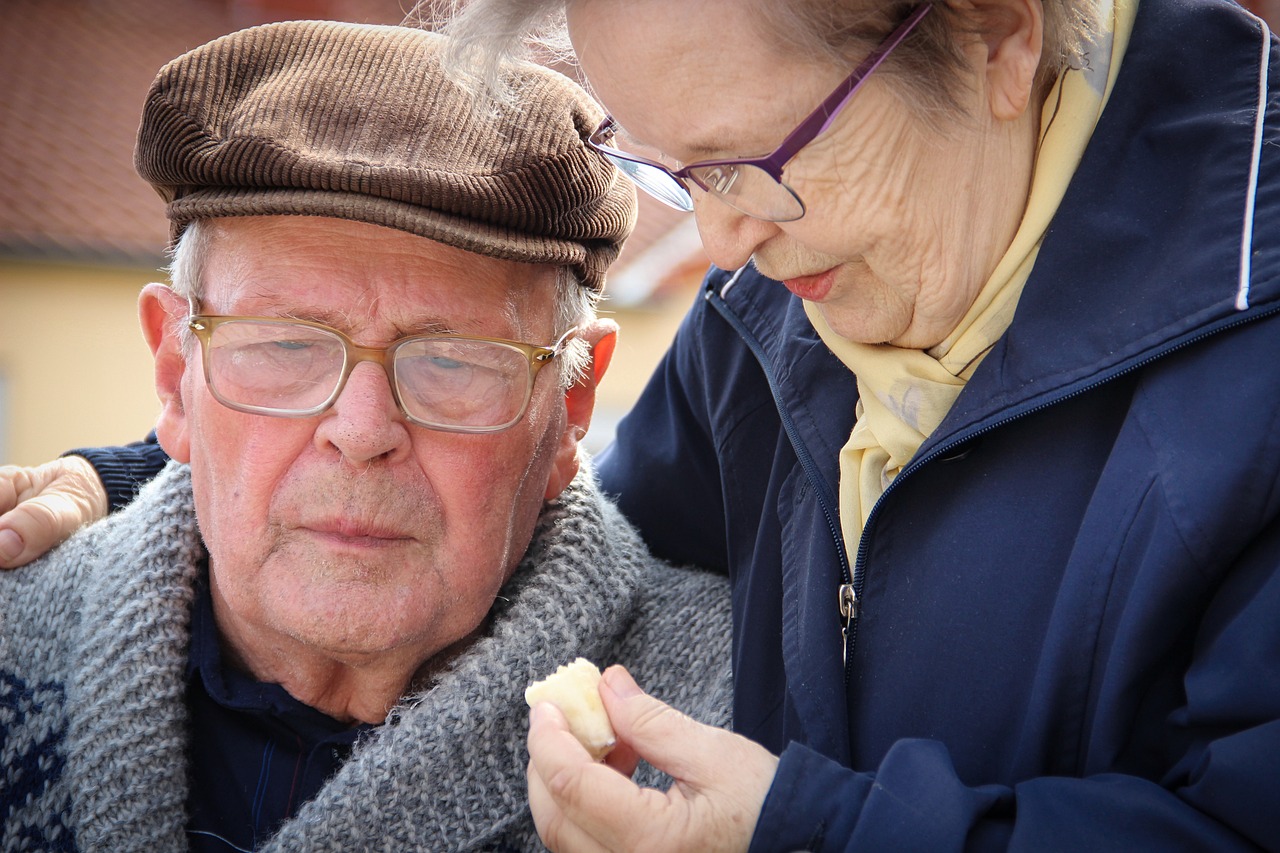
Scams and Fraud
In today's digital age, scams and fraud have become alarmingly prevalent, especially targeting our senior citizens. These deceptive schemes can take many forms, from unsolicited phone calls to phishing emails, and they can leave victims feeling vulnerable and violated. It's essential for seniors to recognize that self-defense is not only about physical confrontations; it also encompasses protecting oneself from financial exploitation and deceptive practices. Just as a thief might lurk in the shadows, waiting for the right moment to strike, scammers often hide behind screens and phone lines, preying on the unsuspecting.
To really grasp the impact of these scams, let's look at some common types that seniors should be aware of:
- Phone Scams: These often involve callers pretending to be from legitimate organizations, like the IRS or a charity, and they may request personal information or money.
- Online Scams: Seniors may receive emails or messages that appear to be from trusted sources, asking for sensitive information or offering unbelievable deals.
- Investment Scams: Fraudsters may offer 'too good to be true' investment opportunities, especially in the realm of real estate or cryptocurrency.
- Romance Scams: These scams involve building a fake romantic relationship online, ultimately leading to requests for money.
Understanding these threats is crucial. According to the Federal Trade Commission (FTC), older adults lose an estimated $3 billion annually to fraud. This staggering figure highlights the urgency for seniors to adopt a proactive approach to their safety, similar to how they would prepare for physical self-defense. Just as one would practice physical moves to fend off an attacker, seniors can equip themselves with knowledge and strategies to recognize and avoid scams.
One effective way to combat scams is through awareness and education. Community centers and local organizations often offer workshops specifically designed to educate seniors about the latest scams and how to protect themselves. These workshops can empower seniors, providing them with the tools they need to identify red flags and respond appropriately. It's like having a shield against the arrows of deceit that scammers launch.
Moreover, seniors should consider establishing a network of trusted friends and family members with whom they can share information about suspicious calls or emails. Just as a knight would never venture into battle alone, having a support system can provide an added layer of security. If something feels off, it’s always wise to consult with someone else before taking action.
In conclusion, while the world may seem full of threats, both physical and financial, seniors can take charge of their safety. By staying informed about scams and practicing vigilance, they can protect themselves from becoming victims of fraud. Remember, knowledge is power, and in the battle against deception, it can be your strongest ally.
Q: What are some common signs of a scam?
A: Common signs include unsolicited calls or emails, requests for personal information, high-pressure tactics, and offers that seem too good to be true.
Q: How can I report a scam?
A: You can report scams to the Federal Trade Commission (FTC) through their website or by calling their consumer hotline. Local authorities and consumer protection agencies can also be contacted.
Q: Are there any resources for learning about scams?
A: Yes, many community centers, libraries, and online platforms offer resources and workshops aimed at educating seniors about scams and fraud prevention.

Essential Self-Defense Techniques
When it comes to self-defense, especially for our beloved senior citizens, it's all about finding techniques that are not only effective but also easy to learn and execute. The goal here is to empower seniors with skills that can help them navigate potentially dangerous situations, boosting their confidence and ensuring their safety. Think of self-defense as a set of tools in a toolbox; each technique is a tool that can be used depending on the situation at hand. Let's dive into some essential self-defense techniques that every senior should consider.
First off, verbal de-escalation techniques can be incredibly powerful. Imagine walking down the street and encountering someone who seems aggressive. Instead of panicking or resorting to physical confrontation, seniors can use their words to defuse the situation. Simple phrases like, "I don’t want any trouble," or "Let’s just walk away," can often redirect an escalating conflict. It's about using calm, assertive communication to create distance from potential threats. This approach not only avoids confrontation but also helps maintain dignity and composure.
Next, we have basic physical defense moves. These moves don’t require a black belt in karate but can be effective in a pinch. For example, a simple palm strike to the nose or a knee to the groin can create an opportunity to escape from an attacker. It's crucial for seniors to practice these moves regularly, so they feel comfortable executing them if the need arises. Even a few minutes of practice each week can make all the difference. Here are a few basic moves to consider:
- Wrist Release: If someone grabs your wrist, twist your arm towards them and pull away sharply.
- Shin Kick: A swift kick to the attacker's shin can cause them to stumble, giving you a chance to escape.
- Elbow Strike: If an attacker is close, an elbow strike to the chest or face can be very effective.
Moreover, it’s essential to practice these techniques in a safe environment, preferably with friends or family members. This not only reinforces the skills learned but also builds confidence. Picture this: practicing these moves with your grandchild in the backyard can turn a serious lesson into a fun bonding experience. It’s all about making self-defense a part of everyday life.
Another vital aspect of self-defense for seniors is having a personal safety plan. This plan should include not just the techniques they’ve learned but also a strategy for different scenarios they might encounter. For instance, if they’re out shopping and feel uneasy, they should know where to go for help, whether that’s a store employee or a police officer. Creating a list of emergency contacts is also a smart move. This list should include family members, friends, and local resources that can be reached quickly in case of an emergency.
Finally, let’s talk about situational awareness. This is perhaps the most crucial self-defense technique of all. Being aware of one’s surroundings can prevent many dangerous situations from ever occurring. Encourage seniors to take a moment to observe their environment when they enter a new place. Are there exits? Are there people around who seem suspicious? By being proactive and alert, they can often avoid danger before it even becomes a threat.
In conclusion, empowering seniors with essential self-defense techniques is not just about teaching them how to fight back; it’s about instilling confidence and providing them with the tools to navigate the world safely. By incorporating verbal de-escalation, basic physical moves, a personal safety plan, and situational awareness into their daily lives, seniors can feel more secure and independent. Remember, self-defense is not just about physical strength; it's about mental preparedness and awareness. So let’s encourage our seniors to embrace these techniques and step out into the world with confidence!
Q: Are self-defense classes safe for seniors?
A: Yes, most self-defense classes designed for seniors focus on techniques that are safe and easy to learn, emphasizing personal safety over physical confrontation.
Q: How often should seniors practice self-defense techniques?
A: Regular practice is key! Even a few minutes each week can help reinforce skills and build confidence.
Q: Can verbal de-escalation really prevent a confrontation?
A: Absolutely! Often, calm and assertive communication can diffuse a tense situation before it escalates.

Verbal De-escalation Techniques
When it comes to self-defense, many people think of physical techniques, but verbal de-escalation can be just as powerful, especially for seniors. Imagine walking through a park and feeling uneasy because someone is approaching you. Instead of panicking or resorting to physical confrontation, using your words can often diffuse a tense situation. The beauty of verbal de-escalation lies in its ability to turn potential conflicts into peaceful resolutions.
So, what exactly does verbal de-escalation involve? At its core, it’s about using communication skills to calm down a situation before it spirals out of control. Here are some essential components to keep in mind:
- Stay Calm: Your demeanor sets the tone. If you remain calm, it can help to calm the other person.
- Use a Soft Tone: Speaking softly can often disarm someone who is agitated.
- Listen Actively: Show that you are listening by nodding or using verbal affirmations like "I see" or "I understand."
- Empathize: Acknowledge the other person’s feelings. Phrases like "I understand that you’re upset" can go a long way.
- Avoid Confrontation: Instead of challenging the person, ask open-ended questions to redirect the conversation.
For instance, if someone is yelling at you, instead of shouting back, you might say, “I can see that you’re really upset. Let’s talk about what’s bothering you.” This approach not only shows that you care about their feelings but also shifts the focus away from confrontation.
Moreover, practicing these techniques can make a world of difference. Consider role-playing scenarios with friends or family members where you can practice your verbal skills in a safe environment. The more comfortable you become with these techniques, the more confident you’ll feel in real-life situations.
In conclusion, mastering verbal de-escalation techniques is a vital part of self-defense for seniors. By focusing on communication, you can often prevent a situation from escalating into something dangerous. Remember, your words can be your strongest defense!
Q: What is verbal de-escalation?
A: Verbal de-escalation is the process of using communication techniques to calm down a potentially volatile situation, often preventing conflict or violence.
Q: How can seniors practice verbal de-escalation?
A: Seniors can practice verbal de-escalation by role-playing scenarios with friends or family, focusing on using calm language, active listening, and empathy.
Q: Are there specific phrases that can help in de-escalating a situation?
A: Yes, phrases like "I understand you’re upset" or "Let’s talk about this calmly" can help in diffusing tension.
Q: Can verbal de-escalation work in all situations?
A: While it can be effective in many situations, it’s essential to gauge the context. If a situation feels genuinely unsafe, prioritizing personal safety is crucial.

Basic Physical Defense Moves
When it comes to self-defense, having a few in your arsenal can make a world of difference. These techniques are not only easy to learn but also effective in helping seniors protect themselves in various situations. Think of these moves as your personal safety toolkit—simple yet powerful tools that can boost your confidence and enhance your ability to respond to potential threats.
One fundamental move is the palm strike. This technique involves using the palm of your hand to strike an assailant's face or nose. It's particularly effective because it allows you to generate power without putting your wrist at risk of injury, which is crucial for seniors. To execute a palm strike, stand firm with your feet shoulder-width apart, and thrust your palm forward, aiming for the assailant’s facial area. This move can create enough distance for you to escape.
Another essential technique is the knee strike. This maneuver is particularly useful in close-quarter situations. If an attacker is within arm's reach, raising your knee to strike their groin can incapacitate them momentarily. To perform this move, lift your knee sharply while maintaining balance, aiming for the groin area. This not only disrupts the attack but also gives you a chance to flee to safety.
Additionally, learning how to break free from grabs can be invaluable. If someone grabs your wrist or arm, you can use the twisting escape technique. To do this, rotate your wrist towards the thumb of the person holding you, while simultaneously stepping back to create distance. This move takes advantage of the natural mechanics of the grip and can help you break free without requiring excessive strength.
Moreover, it's important to practice these moves regularly. Engaging in drills with friends or family can reinforce your skills and make you feel more comfortable executing them in real-life situations. Remember, the goal is not to become a martial arts expert but to empower yourself with the knowledge and ability to defend against potential threats.
To help you visualize these techniques, here's a simple table summarizing the basic physical defense moves discussed:
| Technique | Description |
|---|---|
| Palm Strike | Use the palm of your hand to strike the attacker's face or nose. |
| Knee Strike | Lift your knee to strike the attacker's groin in close quarters. |
| Twisting Escape | Rotate your wrist towards the attacker's thumb to break free from a grab. |
In conclusion, mastering these basic physical defense moves can significantly enhance your sense of security and independence. Remember, practice makes perfect! The more you familiarize yourself with these techniques, the more confident you'll feel in your ability to defend yourself. After all, self-defense is not just about physical strength; it’s about being aware, prepared, and empowered.
Frequently Asked Questions
- How long does it take to learn these self-defense moves? Most seniors can grasp the basics within a few sessions, especially with regular practice.
- Are these techniques safe for seniors? Yes, these moves are designed to be effective yet safe, minimizing the risk of injury.
- Can I practice these moves alone? While practicing with a partner is beneficial, you can also use a mirror to refine your techniques.
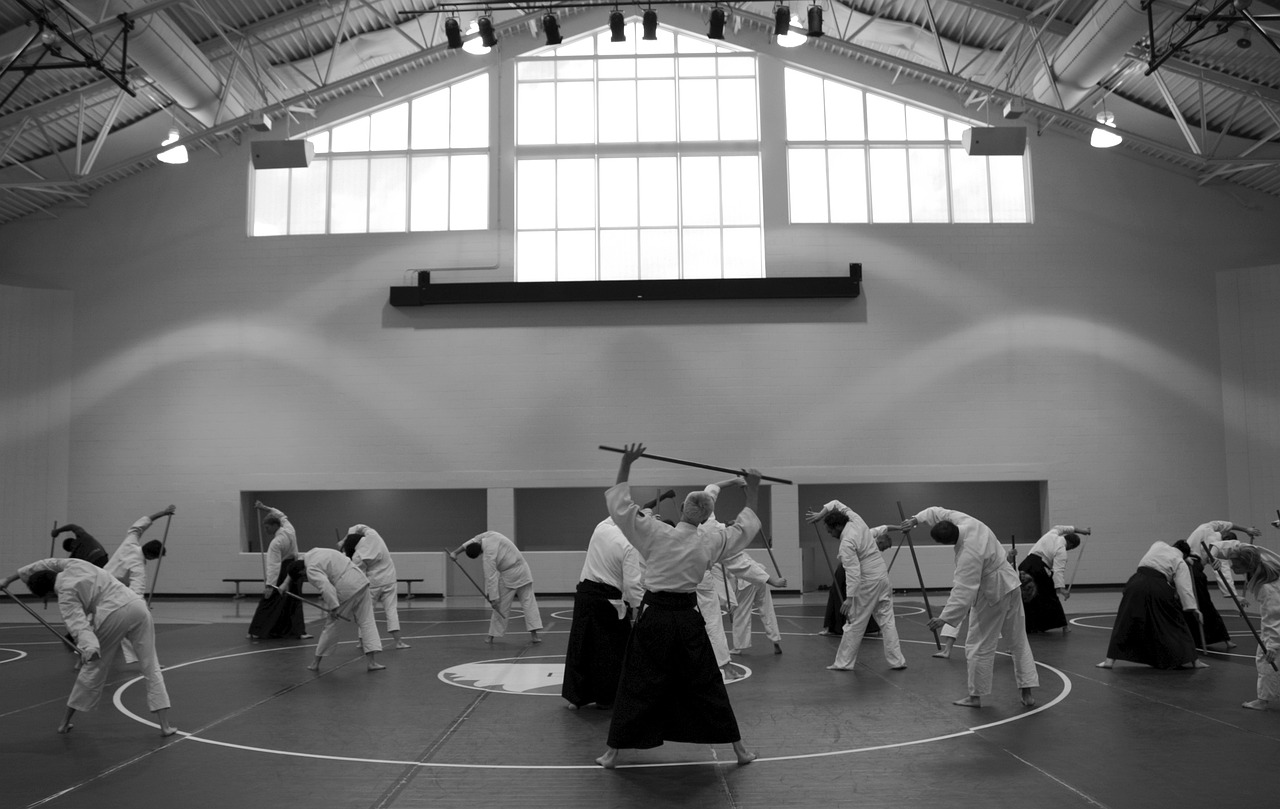
Building Confidence Through Training
When it comes to self-defense, the old saying, "Practice makes perfect," couldn't be more accurate, especially for our senior citizens. Building confidence through training is not just about learning techniques; it's about fostering a mindset that empowers individuals to feel safe and secure in their surroundings. Imagine standing in front of a mirror, practicing your stance and moves, and feeling that rush of empowerment wash over you. That’s what training can do! It’s like discovering a hidden treasure within yourself, waiting to be unearthed.
Training is essential for mastering self-defense techniques. Regular practice helps seniors not only to refine their skills but also to build muscle memory. This means that in a moment of crisis, their body instinctively knows how to react. Think of it as learning to ride a bicycle; once you’ve practiced enough, you can do it without even thinking about it. This level of preparedness can significantly enhance a senior's confidence, making them feel more in control of their personal safety.
Moreover, participating in self-defense classes can provide a sense of community. Engaging with others who share similar concerns creates a supportive environment where everyone encourages one another. It’s an opportunity to bond over shared experiences while learning valuable skills. Imagine a room full of seniors, laughing and practicing together, each one cheering the other on. That camaraderie can be just as important as the techniques learned.
When looking for the right class, seniors should consider several factors:
- Instructor Experience: Look for instructors who have experience teaching older adults. They should understand the unique needs and abilities of seniors.
- Class Environment: A welcoming and friendly atmosphere can make a huge difference. Seniors should feel comfortable asking questions and making mistakes.
- Techniques Taught: Ensure that the class focuses on practical self-defense techniques that are easy to learn and apply.
Additionally, practicing with friends and family can amplify the benefits of training. When loved ones join in, it not only makes the practice sessions more enjoyable but also reinforces the skills learned. Picture this: a family gathering where everyone takes turns practicing self-defense moves. It’s a fun way to bond while also ensuring that everyone knows how to stay safe. Plus, having a practice partner can help seniors feel more confident, knowing they have support from those they trust.
In conclusion, building confidence through training is a vital step for seniors looking to enhance their self-defense skills. It’s not just about learning how to protect oneself; it’s about nurturing a sense of empowerment and community. So, whether it’s through formal classes or casual practice with loved ones, every moment spent training is a step towards greater confidence and safety.
Q: How often should seniors practice self-defense techniques?
A: Regular practice is key. Ideally, seniors should engage in self-defense training at least once a week to retain their skills and build confidence.
Q: Are self-defense classes safe for seniors?
A: Yes! Many self-defense classes are specifically designed for seniors, focusing on techniques that are safe and suitable for their physical abilities.
Q: What if I have mobility issues?
A: Many self-defense techniques can be adapted for those with mobility issues. It’s important to communicate any concerns with the instructor, who can provide modified techniques.
Q: Can self-defense training help with mental well-being?
A: Absolutely! Self-defense training not only boosts physical confidence but also enhances mental well-being by reducing anxiety and promoting a sense of empowerment.

Finding the Right Class
Choosing the right self-defense class can feel a bit like searching for a needle in a haystack, especially with so many options available. It's essential to find a class that resonates with your needs and comfort level. After all, the goal here is to empower yourself, not to feel overwhelmed. Start by considering the instructor's experience. Look for someone who has a background in teaching self-defense to seniors, as they will understand the unique challenges and needs that older adults face. A good instructor should be patient, encouraging, and able to adapt techniques to suit varying physical abilities.
Next, think about the class environment. Is it welcoming and supportive? You want to feel at ease while learning. A positive atmosphere can make all the difference in how effectively you absorb the techniques being taught. Don't hesitate to ask about the class size; smaller groups often allow for more personalized attention, which can enhance your learning experience.
Additionally, it’s wise to check the curriculum. Does it include a mix of verbal de-escalation techniques and physical moves? A well-rounded program should cover both aspects, as communication skills can often diffuse a tense situation before it escalates. You might also want to inquire about the frequency of classes and whether they offer opportunities for practice outside of regular sessions. Consistent practice is key to building confidence and competence.
Finally, consider the location and schedule. Is the class conveniently located? Does it fit your schedule? You want to ensure that attending the class is as stress-free as possible, so you can focus on learning. Here’s a simple table to help you compare different classes:
| Class Name | Instructor Experience | Class Size | Location | Schedule |
|---|---|---|---|---|
| Self-Defense for Seniors | 10+ years with seniors | 8-10 participants | Community Center | Tuesdays & Thursdays, 6 PM |
| Empowerment Through Defense | 5 years, mixed age groups | 15-20 participants | Local Gym | Wednesdays, 5 PM |
In conclusion, finding the right self-defense class is about more than just learning techniques; it’s about building confidence and ensuring you feel safe and empowered in your daily life. Take your time, do your research, and don’t hesitate to visit a class or two before making your decision. Your safety and well-being are worth it!
1. How do I know if a self-defense class is suitable for seniors?
Look for classes specifically designed for older adults, focusing on techniques that are easy to learn and implement. Instructors should have experience working with seniors.
2. Are self-defense classes physically demanding?
Many self-defense classes for seniors are tailored to accommodate different fitness levels. It's essential to communicate your comfort level with the instructor.
3. Can self-defense training really help me feel safer?
Absolutely! Self-defense training not only teaches you techniques but also boosts your confidence and awareness of your surroundings.
4. How often should I practice self-defense techniques?
Regular practice is crucial, ideally at least once a week. Engaging with friends or family can make practice more enjoyable and effective.

Practicing with Friends and Family
Practicing self-defense techniques with friends and family is not just a fun activity; it’s a crucial component in mastering these skills. Imagine this: you're learning how to defend yourself, but the real magic happens when you can practice those moves in a supportive environment. It's like learning to ride a bike—sure, you can watch videos or read books about it, but nothing beats the experience of actually getting on that bike with someone there to help you balance.
Engaging in practice sessions with loved ones not only reinforces your skills but also helps to build confidence. When you practice with someone you trust, you can experiment with different techniques without the fear of judgment. Plus, it can be a great way to bond! You might find yourself laughing at the awkward moments, which makes the learning process enjoyable. This camaraderie creates a positive atmosphere where everyone feels empowered to learn.
So, how can you effectively practice self-defense with your friends and family? Here are a few tips:
- Set a Regular Schedule: Consistency is key! Try to meet weekly or bi-weekly to practice together. This way, you’ll keep your skills sharp and build on what you learn each session.
- Take Turns Being the Attacker and Defender: This role reversal can provide valuable insights into both sides of a confrontation. It helps you understand the mindset of an aggressor and how to react effectively.
- Use Realistic Scenarios: Try to simulate real-life situations you might encounter. This could include practicing how to react if someone approaches you too closely or how to handle a situation where someone is trying to take your belongings.
- Encourage Feedback: Constructive criticism is essential for improvement. Encourage your practice partner to give you feedback on your techniques, and don’t hesitate to provide your own.
Remember, the goal is to make these sessions enjoyable and educational. By practicing together, you not only enhance your self-defense skills but also create a network of support that can be invaluable in times of need. Plus, you never know—your practice buddy might just become your go-to partner in a self-defense situation!
Q: How often should I practice self-defense techniques?
A: Ideally, you should practice at least once a week to maintain your skills and build confidence.
Q: Can I practice self-defense techniques at home?
A: Absolutely! Many techniques can be practiced in the comfort of your home. Just ensure you have enough space and a safe environment.
Q: Do I need a partner to practice self-defense?
A: While having a partner is beneficial, you can also practice techniques solo. Shadowboxing and using a mirror can help you refine your movements.
Q: What if I feel uncomfortable practicing with others?
A: It’s important to feel safe and comfortable. If practicing with others feels overwhelming, consider starting with solo drills and gradually incorporating a partner when you feel ready.
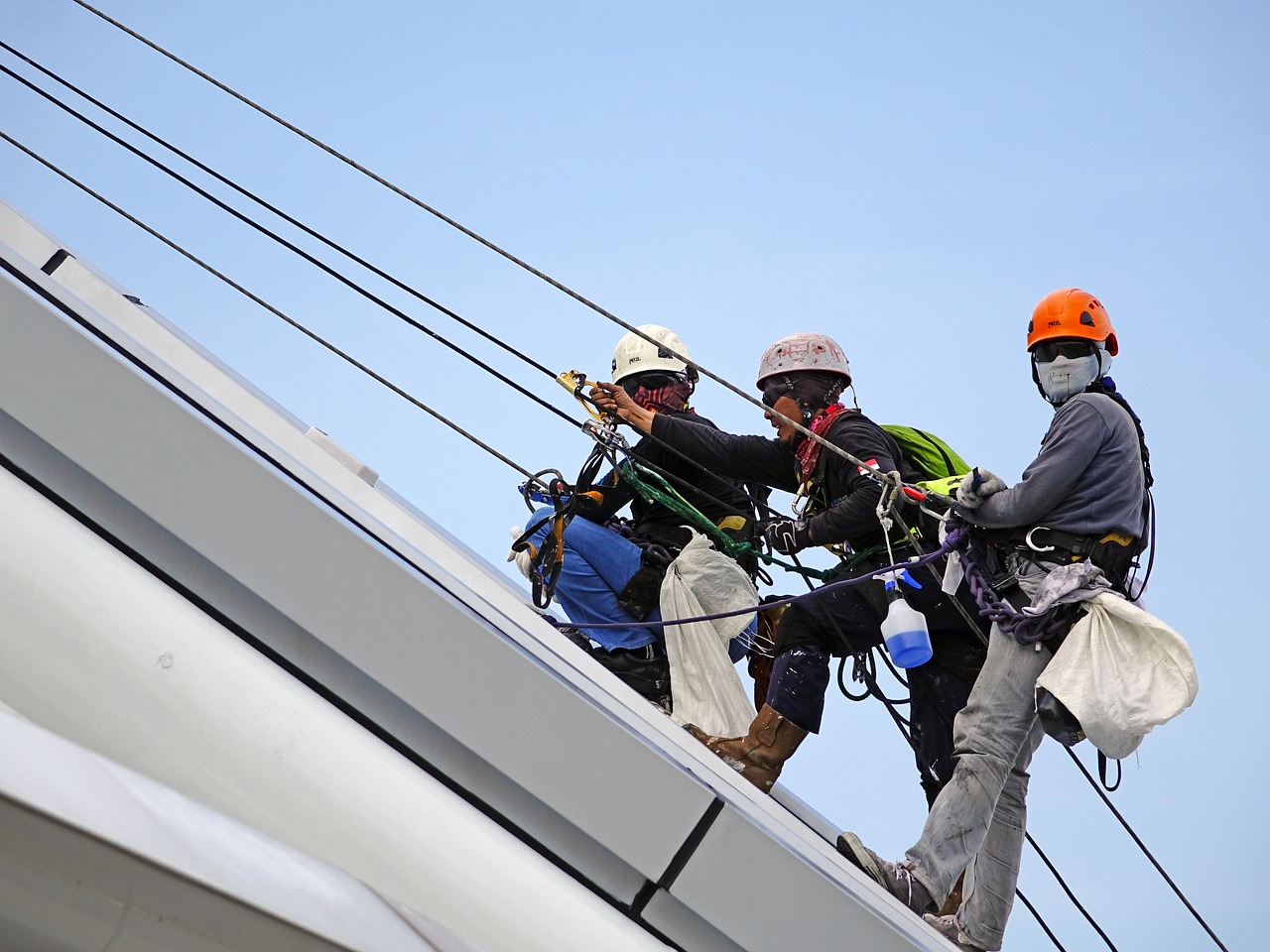
Creating a Personal Safety Plan
Creating a personal safety plan is not just a precaution; it’s a vital step toward empowering senior citizens to feel more secure in their daily lives. Think of it as a roadmap that guides you through potential hazards, ensuring that you know exactly what to do in various situations. A well-thought-out safety plan can make a world of difference, transforming fear into confidence. So, how do you go about crafting this important document?
First and foremost, it’s essential to acknowledge that a personal safety plan should be tailored to fit individual needs. Consider your daily routines, your living environment, and any specific concerns you might have. For instance, do you often walk alone in your neighborhood? Are there certain times of day when you feel more vulnerable? By identifying these factors, you can create a plan that addresses your unique circumstances.
One key component of a personal safety plan is establishing a list of emergency contacts. This list should include:
- Family members or close friends who can be reached quickly.
- Local authorities, such as the police department or fire department.
- Healthcare providers or emergency medical services.
Having these contacts readily available can help you respond swiftly in case of an emergency. Make sure to keep this list in an easily accessible place, such as on your refrigerator or in your wallet. Additionally, consider sharing this information with trusted friends or family members so they can assist you if needed.
Another important aspect of your personal safety plan is situational awareness. This means being conscious of your surroundings and recognizing potential dangers. Take a moment to observe your environment when you’re out and about. Are there areas that seem poorly lit or isolated? Are there any individuals who seem suspicious? By honing your situational awareness, you can better prepare yourself to avoid risky situations. It’s like being a detective in your own life, always on the lookout for clues that could indicate trouble.
Lastly, don’t forget to incorporate self-defense techniques into your plan. Knowing how to respond physically can provide an extra layer of security. Whether it's practicing verbal de-escalation tactics or learning basic self-defense moves, integrating these skills into your safety plan can empower you to take control of a situation if necessary. Remember, the goal is not just to react but to feel prepared and confident in your ability to handle whatever comes your way.
In summary, creating a personal safety plan involves recognizing your unique needs, establishing emergency contacts, maintaining situational awareness, and integrating self-defense techniques. This comprehensive approach not only enhances your safety but also fosters a sense of independence and confidence. So, take the time to sit down, reflect on your daily life, and craft a personal safety plan that works for you. After all, being prepared is the best way to ensure your peace of mind.
Q: What should I include in my personal safety plan?
A: Your personal safety plan should include emergency contacts, situational awareness strategies, and self-defense techniques tailored to your needs.
Q: How can I improve my situational awareness?
A: Practice being mindful of your surroundings, observe people and places, and trust your instincts. Regularly assess your environment for potential risks.
Q: Are there specific self-defense classes for seniors?
A: Yes, many community centers and gyms offer self-defense classes specifically designed for seniors, focusing on techniques that are easy to learn and apply.

Emergency Contacts and Resources
In today's world, having a well-thought-out emergency contact list is crucial for seniors. Imagine being in a situation where you need immediate help, but you can’t remember whom to call. This is where a comprehensive list of emergency contacts comes into play. It’s not just about jotting down names and numbers; it’s about creating a lifeline that can make all the difference in a crisis.
First and foremost, your emergency contact list should include family members and close friends who can be reached quickly. Consider including:
- Immediate Family: Spouse, children, or siblings.
- Close Friends: Trusted friends who can provide assistance.
- Neighbors: Someone nearby who can help in case of an emergency.
In addition to personal contacts, it’s wise to have local services listed as well. These could include:
- Local Police Department: For immediate assistance in case of threats.
- Fire Department: In case of fire emergencies.
- Medical Emergency Services: For health-related emergencies.
Moreover, consider creating a table that outlines important resources, such as local shelters, hospitals, and community centers that offer assistance to seniors. Here’s an example:
| Resource Type | Name | Contact Number | Address |
|---|---|---|---|
| Hospital | City General Hospital | (123) 456-7890 | 123 Main St, Anytown |
| Senior Center | Golden Years Community Center | (987) 654-3210 | 456 Elm St, Anytown |
| Police Department | Anytown Police | (555) 123-4567 | 789 Maple St, Anytown |
It’s also important to keep this list updated. People move, numbers change, and new resources become available. Regularly reviewing and updating your emergency contacts ensures that you have the most accurate information at your fingertips.
Lastly, consider storing this list in multiple locations. Keep a printed copy at home, have another in your wallet, and even share a digital version with trusted family members. By doing this, you’re not only preparing for emergencies but also empowering yourself with the knowledge that help is just a call away.
Q: How often should I update my emergency contact list?
A: It's recommended to review your emergency contact list at least every six months to ensure all information is current.
Q: What should I do if I don't have many contacts?
A: Consider reaching out to neighbors or community groups. You can also connect with local senior centers for support and resources.
Q: Are there any apps that can help me manage my emergency contacts?
A: Yes, there are several apps available that allow you to store and manage emergency contacts easily. Look for ones that offer features like quick access and sharing options.

Staying Aware of Surroundings
Staying aware of your surroundings is not just a skill; it's a vital practice that can significantly enhance the safety and well-being of senior citizens. Think of it as a radar system—constantly scanning the environment for potential threats or unusual activities that could pose a risk. By being conscious of what’s happening around you, you can spot potential dangers before they escalate into serious situations. Imagine walking through a park and noticing someone loitering suspiciously; this awareness could prompt you to change your route or seek assistance, potentially avoiding a dangerous encounter.
Being aware also means engaging your senses—your eyes, ears, and even your intuition. Pay attention to the people nearby, their behaviors, and the overall atmosphere. If something feels off, trust that instinct! For instance, if you notice a person following you too closely, it might be time to take action, whether that’s crossing the street or heading towards a more populated area. It's like being a detective in your own life, piecing together clues to ensure your safety.
Here are some key strategies for enhancing your situational awareness:
- Keep Your Head Up: Avoid being glued to your phone or other distractions while walking. Keeping your head up allows you to notice your surroundings and spot potential threats.
- Trust Your Gut: If something feels wrong, it probably is. Always listen to your instincts; they can often alert you to danger before your mind fully processes it.
- Know Your Environment: Familiarize yourself with the areas you frequent. Knowing where the exits, public restrooms, and safe spots are can be immensely helpful in a pinch.
Additionally, practicing mindfulness can be beneficial. This doesn’t mean you need to meditate for hours; rather, it’s about being present in the moment. When you're out and about, take a moment to breathe and observe your environment. What do you see? What do you hear? This practice can sharpen your awareness and help you react more quickly if a situation arises.
Incorporating these habits into your daily life can help you feel more empowered and secure. Remember, staying aware is about being proactive rather than reactive. It’s about taking control of your safety and ensuring that you can enjoy your independence without unnecessary fear. So, the next time you step out, consider yourself a vigilant guardian of your own well-being!
Q: What should I do if I feel unsafe in a public place?
A: Trust your instincts. If you feel uncomfortable, seek a well-lit area or approach a nearby store or establishment where you can ask for help.
Q: How can I practice situational awareness?
A: You can practice situational awareness by engaging in activities that require focus and attention, such as walking in new neighborhoods, observing people and their behaviors, and regularly checking your surroundings.
Q: Are there specific self-defense classes for seniors?
A: Yes, many community centers and martial arts studios offer self-defense classes tailored specifically for seniors, focusing on techniques that are easy to learn and apply.
Q: How can I improve my confidence in self-defense?
A: Regular practice, attending classes, and role-playing scenarios with friends or family can significantly boost your confidence in self-defense techniques.
Frequently Asked Questions
- Why is self-defense important for senior citizens?
Self-defense is crucial for seniors as it enhances their safety and boosts their confidence. With self-defense skills, older adults can feel more empowered to navigate their daily lives, knowing they have the tools to protect themselves in various situations.
- What types of threats do seniors commonly face?
Seniors often encounter a range of threats including physical attacks, scams, and environmental hazards. Understanding these threats can help them be more aware and prepared, reducing their vulnerability in potentially dangerous situations.
- What are some effective self-defense techniques for seniors?
Some effective self-defense techniques include verbal de-escalation skills and basic physical defense moves. These techniques are designed to be easy to learn and can be applied in real-life situations, making them accessible for seniors.
- How can training improve self-defense skills?
Regular training is essential for mastering self-defense techniques. Engaging in self-defense classes not only helps seniors learn new skills but also builds their confidence and competence in handling various situations.
- What should seniors look for in a self-defense class?
When choosing a self-defense class, seniors should look for instructors experienced in teaching older adults. It's important to find a class that focuses on practical techniques, provides a supportive environment, and encourages regular practice.
- How can seniors create a personal safety plan?
A personal safety plan for seniors should include self-defense techniques, a list of emergency contacts, and strategies for situational awareness. This comprehensive approach can greatly enhance their overall safety and preparedness.
- What role does situational awareness play in self-defense?
Situational awareness is vital for self-defense as it helps seniors recognize potential dangers in their environment. By being mindful of their surroundings, they can take proactive steps to avoid risky situations before they escalate.



















